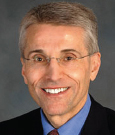Welcome to the meeting we hold every 3 years to choose our next projects,” said John Mendelsohn, MD, Chair of the National Cancer Policy Forum and Director of the Khalifa Institute for Personalized Cancer Therapy at The University of Texas M.D. Anderson Cancer Center, Houston.
“We have here a roomful of thought leaders in cancer research and care—the best audience to identify our most pressing policy issues, and I look forward to hearing what you think are those with the highest priority—that have opportunities for action,” he said at the Institute of Medicine’s 2013 National Cancer Policy Summit, held recently in Washington, DC.
Basic and Translational Research
“Today’s cancer scientists must train replicas of themselves for the future,” said William G. Kaelin, Jr, MD, Professor of Medicine, Dana-Farber Cancer Institute, Boston. To that end, he suggested three critical needs: basic discovery in the public sector that complements private applied research, a sustainable model for scientific training and research funding, and exchange of information and reagents in the public and private sectors. In other words, he summarized, continue current efforts and make sure there’s money to keep it going.
Andrea Califano, PhD, Clyde and Helen Wu Professor of Chemical and Systems Biology, Columbia University, New York, talked about what he sees as the difference between traditional approaches to precision medicine and a systems biology approach. In the former, he said, predictions are based on statistical associations, whereas in the latter, predictions are based on a physical regulatory model. “Switching from one to the other requires significant change.”
He noted that there are now 500 phase III clinical trials underway in the United States. “This provides an untapped opportunity for precision medicine because it makes patient data broadly available to the research community; it allows blind, prospective prediction of responders vs nonresponders; and it is an evaluative tool when the study closes.”
He also believes that trials should be started earlier. “Patients may be too sick by the time they have access to experimental therapy.”
Spyro Mousses, PhD, Director of Pharmaceutical Genomics at TGen, Phoenix, noted that open biomedical knowledge and private patient data can be combined to form a systems oncology clearinghouse to form an evolving network of knowledge with links to drugs and patients’ genomic data, thus creating matches via evolving multiscalar models.
He posed three provocative questions. First, should personalized medicine and clinical drug development be regulated differently, or are they “flip sides of the same coin”?
Second, how do we refine policies that limit how genomic data are interpreted to inform clinical decisions?
Third, how do we reconcile evidence-based medicine when there is only one patient in a clinical trial (N=1)? Specifically, how do we incorporate mechanistic knowledge from genomic medicine to justify individual treatment decisions?
Diagnostics and Therapeutic Development
James H. Doroshow, MD, NCI Deputy Director for Clinical and Translational Research, Bethesda, Maryland, said that in order to optimize patient-centric models of cancer research, we need to change the preclinical paradigm to:
- One with individual predictive therapeutic models using systems derived from molecularly characterized tumor biopsies or circulating DNA
- Proof-of-mechanism trials, based on preclinical models that incorporate specific individualized data at treatment initiation as well as at disease progression
- Collaboration that applies new models to drug development
Richard Pazdur, MD, Director of the U.S. Food and Drug Administration (FDA) Office of Hematology and Oncology Products, noted that because cancer drugs are more effective than ever, we need to rethink clinical trials. For example, instead of assuming that a randomized controlled trial is the best—or the only—way to demonstrate safety and efficacy, we need to rethink the way we do things and ask whether or not a randomized trial is needed or even ethical to conduct.
“Is a randomized trial appropriate at all when the control group is at a clear disadvantage at the outset and will likely cross over to the investigational arm to obtain the drug they believe is more effective from the start? Equipose may be lost from the onset,” he stated.
To expedite drug development when similar drugs are being developed for an indication, he suggested a study design in which several investigational drugs are compared at the same time to an already-approved common control. The investigational drugs would not necessarily be in competition with one another, and more than one could “win.”
“I also worry that investigational drug safety is rarely discussed and that there is a dearth of safety data we obtain from single-arm trials. We do not have comparative safety data when we rely on a single arm trial to determine safety and efficacy. We have to be more concerned about the harms these drugs are doing to patients, regardless of how effective they are and how life-threatening the disease,” said Dr. Pazdur.
New Paradigms
Razelle Kurzrock, MD, Murray Professor of Medicine, UC San Diego Moores Cancer Center, asked one of the most disconcerting questions of the day: What if every patient with metastatic disease is genomically unique?
If this were true, trial design would have to be turned on its head. “In the model we use now, patients are not selected by molecular characteristics, and this results in a poor likelihood of efficacy because many of them do not have the molecular defect in question.”
If most (or all) patients require a specially tailored treatment regimen, the current clinical trial endeavor is almost impossible. Given an estimate of at least 300 current oncology drugs (that are either approved or in advanced testing), said Dr. Kurzrock, there are 45,000 two-drug combinations and 4,455,100 three-drug combinations. This means 1,000 years of trial and error to figure out what would work for a particular patient.
A new model uses smaller trials where all patients have the relevant mutation or genetic defect, leading to a greater chance of success. “In phase II, for instance, we could use multiplex markers to diagnose and classify cancers, validate a specific strategy, and understand convergence pathways.”
There are problems with this model, though. Drugs may not be easily acquired or repurposed, and there are greater regulatory burdens. “Despite this, we need new paradigms: N=1 strategies, drug trials that take place earlier in the course of a disease, and more customized drug combinations.”
Drug Development Strategies
Mace Rothenberg, MD, Senior Vice President for Clinical Development and Medical Affairs, Pfizer Oncology, New York, addressed four provocative questions. First, how can we integrate genomics and other platform diagnostics into drug development strategies that will meet regulatory requirements for companion diagnostics? His response was that the era of “one-off” diagnostics is over for certain diseases where multiple driver or actionable mutations are identified. Moreover, there is a limited amount of tissue for stand-alone diagnostics. But even if genomics and similar platforms provide sufficient accuracy, consistency, reliability, and reproducibility, regulatory agencies may not accept single-analyte results.
Second, can the results of minimally invasive diagnostic tests be used to expedite drug development and inform therapeutic decisions? Dr. Rothenberg said that technology is improving rapidly for detection and analysis of circulating tumor cells, and we know that enumeration of and change in circulating tumor cells are useful prognostic and predictive tools. But can we take the next step and evaluate the relationship between molecular characteristics of circulating tumor cells and development of clinical resistance?
Third, how can we make the greatest use of N=1 studies? This question led to others: What threshold of evidence should qualify a biomarker for patient selection? When are single genetic abnormalities sufficient? What threshold of activity should we expect in biomarker-selected cohorts? And how can we learn from failed N=1 studies? Dr. Rothenberg urged the group to consider these questions as it settled on priorities.
Fourth, is it possible to define a preferred sequence or hierarchy of therapies for a specific disease? For instance, a drug with a longer progression-free survival in first-line therapy but which confers cross-resistance to other drugs may not be preferable over a drug with a shorter progression-free survival, which can then be followed by second- and third-line drugs that, taken together, result in a longer progression-free survival, overall.
Keynote Speech
In his keynote presentation, Warren A. Kibbe, PhD, Director, NCI Center for Biomedical Informatics and Information Technology, Rockville, Maryland, offered three policy issues:
- Does informed consent enable research? Is there a role for standardized consent, and can translational research be undertaken without it?
- Identification of specimens and data—any tissue will be rapidly identifiable, and sequence is like a fingerprint. What is privacy? If patients would like to see their specimens and data available for research and discovery, how do we enable that?
- Open access to data—how can we promote the desire of patients to enable the open access to specimens and data to make truly transformative inferences and observations? Consent is a process, and how can we give patients better control over their consent decision on an ongoing basis? What does that mean for data and specimens that have already been released. How do we incorporate this into standardized consent and open science discussions?
He noted that social media could measure and explain attitudes and behavior in a population, perhaps enabling better risk estimates. “Social media are a big data opportunity, but what are the ethics of using them for research? People say they want more data sharing, but using data in a way that translates into health statistics and personal information changes the paradigm. To put that in cancer terms, we need to find an ethical way to combine systems biology and social data with clinical care and outcomes from providers.”
The future, said Dr. Kibbe, may reside in elastic computing clouds, that is, social networks and big data analytics to produce semantic and synoptic data that can result in precision medicine, accurate health measurement, and protective medicine—intervention before health is compromised.
Evidence Generation and Delivery of Care
Mark B. McClellan, MD, PhD, Senior Fellow and Director of the Initiative on Value and Innovation in Health Care, Brookings Institution, Washington, DC, made the future seem somewhat uncertain. There will be more federal budget legislation, as well as changes in Medicare physician payments and possible continued sequestration. Despite current glitches in the Affordable Care Act, there will be new coverage in 2014, including insurance market reforms and Medicaid expansion.
“The traditional approach to paying for health care,” said Dr. McClellan, “is to squeeze payment rates, reduce cost per service, shift costs, and increase volume and intensity. An alternative is to identify ways to reduce overall costs while improving outcomes and to reform financing to support reform—with accountability for better results and lower costs.”
In oncology, treatment pathways must be based on guidelines that use clinical evidence and expert opinion, he noted. Off-pathway care, including some costly chemotherapy, may not be reimbursed. Future oncology reforms include patient-centered medical homes, bundled payments, and accountable care organizations.
Cancer Control and Prevention
“By 2016, there will be 16 million cancer survivors in the United States, most of them over age 65,” said
Catherine M. Alfano, PhD, Deputy Director, NCI Office of Cancer Survivorship, Bethesda, Maryland.
Adult survivors are at risk for a host of chronic and late effects of cancer, primarily recurrence and/or new cancers, obesity, diabetes, osteoporosis, cerebrovascular disease, and various functional limitations. Among 10,397 survivors of childhood cancer, 73% had at least one chronic health condition, 42% of which were severe or life-threatening, and 39% had two or more chronic conditions. Overall, survivors of childhood cancer are 8.2 times more likely than their siblings to have a severe or life-threatening condition.
“We need a new model of survivorship care,” said Dr. Alfano. “We must create well survivors, and that entails working closely with them to prevent or control comorbidities as well as the chronic effects of treatment. But most especially, we need to promote healthy behaviors.”
Otis W. Brawley, MD, Chief Medical Officer, American Cancer Society, Atlanta, said, “We desperately need to recommit our focus on prevention of disease. Thirty percent or more of cancers are due to tobacco, and a substantial proportion are now related to obesity, high caloric intake, and lack of physical activity. These problems are formidable and best overcome by education.”
He added that a substantial number of people—the uninsured, underinsured, and those who don’t know how to work the system—have poor access to care. There is also a fear of—and misunderstanding about—rationing. “At the American Cancer Society, we see a lot of irrational use of health care. This over- and underutilization of appropriate care must be addressed in order to make the system more efficient,” he said.
Jeffrey Levi, PhD, Executive Director, Trust for America’s Health, Washington, DC, agreed and urged financial incentives that hold health systems accountable for outcomes. “Few doubt the effect of lifestyle on cancer prevention and recurrence, and there is growing evidence that lifestyle changes require a partnership between clinical efforts and the community,” he said.
“Many cancer survivors die of competing causes, not cancer itself,” he added, using obesity as an example. By 2030, there will be more than 6 million new cases of type 2 diabetes, 5 million cases of coronary heart disease, and 400,000 obesity-related cancers. But, in Wisconsin alone for instance, if [body mass index] is reduced by only 5%, about 75,000 cases of diabetes can be averted (with a cost savings of a billion and a half dollars), 60,000 cases of coronary heart disease can be prevented ($2 billion saved), and 90,000 cases of obesity-related cancer can be avoided ($75 million).
“Although intervention is critical to change lifestyle, so are systems, policy, and community changes,” said Dr. Levi. He listed three important opportunities: prevention and public health funding support for community grants, financial incentives that hold systems accountable for outcomes, and public health programs that promote lifestyle change.
Affordability and Models of Payment
“Out of control” now describes the cost of cancer care, said Lowell E. Schnipper, MD, Clinical Director, Beth Israel Deaconess Cancer Center, Boston. “People with cancer go bankrupt more than 2.65 times as often as others,” he continued. (Lee N. Newcomer, MD, MHA, Senior Vice President, UnitedHealthcare, Minneapolis, added that by 2016, 50% of all household income will be used to pay for health insurance premiums and out-of-pocket medical expenses.)
Once a patient goes bankrupt, it is often impossible to get back on one’s feet, in which case purchasing cancer care is out of the question. Cancer is the most expensive disease, Dr. Schnipper commented. A price tag of $100,000 or more is now commonplace for one course of treatment—surely out of the reach of the uninsured and underinsured. Even the well insured may soon be priced out of care, he said.
Blame for this situation is often placed on pharmaceutical companies, but they are not the only culprits, Dr. Schnipper pointed out. Generic cancer drugs are not readily available, off-label use of targeted drugs is rarely reimbursed, much oncology care is not reimbursed, multidisciplinary care is highly touted but not yet the norm, there is little incentive to avoid redundancy, and accountable care organizations, although beneficial in principle, are neither commonplace nor efficient.
Moreover, said Dr. Schnipper, “Physicians have not exerted sufficient leadership in bending the cost curve. They could do much more to reduce the cost of cancer care by providing equally effective cheaper alternatives; they could eschew care that has no benefit, or unclear or marginal benefit; they could not use treatments that patients don’t want; and they could avoid duplicated tests and services.”
He added that there are ways to exert cost controls, but in order to achieve them, we must establish a system that defines and rewards high-quality care by:
- Establishing better ways to reimburse providers for time spent with patients
- Allowing the Centers for Medicare & Medicaid Services to negotiate prices for antineoplastic and other agents, as well as payment for off-label use of targeted therapies
- Pricing drugs to reward innovation, uniqueness, and clinical impact
- Using cancer therapy that carries only a high level of evidence
- Avoiding surveillance that carries little or no benefit, such as PSA screening in men with low mortality risk and tumor marker testing after curative breast cancer treatment ■
Disclosures: William G. Kaelin, Jr, MD, owns equity in, and consults for, Agios, Fibrogen, Lilly, Nextech, Peloton, and Tracon. John Mendelsohn, MD, has received royalty income from the University of California, San Diego, which owns the patent on Erbitux. Mark B. McClellan, MD, PhD, has received for remuneration for emploment with Brookings Institution, Washington Speakers Bureau. Mace Rothenberg, MD, is Senior Vice President of Clinical Development and Medical Affairs for the Oncology Business Unit at Pfizer. Otis W. Brawley, MD, is Chief Medical Officer, of the American Cancer Society. Lee N. Newcomer, MD, MHA, is Senior Vice President, Oncology, Genetics and Women’s Health, UnitedHealthcare, and owns stock in UnitedHealthcare. Lowell E. Schnipper, MD, has served in a leadership or employment role for Up to Date and as a consultant for evite.
No potential conflicts of interest were reported by Drs. Pazdur, Alfano, Califano, Mousses, Levi, Doroshow, Kibbe, and Kurzrock.












